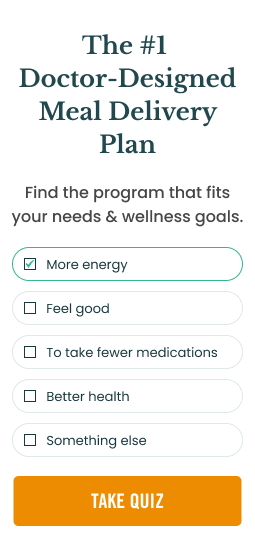
Cheap healthy meals can make eating healthy on a budget easier. However, it can be difficult to know what quality food to buy on a budget. A cheap grocery list crafted by a team of dietitians and nutrition experts makes budget shopping for healthy groceries a breeze.
Read on to discover the top tips from nutrition experts, plus the 37 best foods to buy on a budget.
Can You Eat Healthy on a Budget?
Spoiler alert: Yes, you can eat healthy on a budget!
There’s a big myth that eating healthy has to be expensive. Healthy foods can be pricier, but often finding foods that are nutritious just requires a renewed awareness of what is available.
With a bit of planning, basic skills, and preparation, keeping the body and the budget healthy will feel natural.
Simple Tips for a Cheap Grocery List
Here are six tips for sticking the the budget when it comes to planning for food expenses:
Meal Plan
Plan at least a week of meals with similar ingredients. This way, fresh foods get used and the garbage won’t be full of unused items that have gone bad.
Search for “Superfoods”
Inexpensive “superfoods” can be a great way to stock up on items that offer exceptional nutrition. Beware of buzzwords, however. True superfoods are not items with added ingredients, but rather whole foods with high levels of nutrients.
Stick to the List
At the grocery store, stay focused on the task at hand. Sticking to the list is good for the bank account and also makes it less tempting to peruse the aisles, check out treats, or succumb to sneaky add-on items.
Apps, meal delivery plans, and curbside delivery can make grocery shopping for healthy foods a quick and easy endeavor.
Shop Seasonal & Frozen Produce
Seasonal foods are fresh, inexpensive, and harvested at their peak. This means that they are readily available in season at high quality for lower costs.
Frozen fruits and vegetables can also be helpful to save money. When choosing these products, though, make sure to. For instance, look for frozen vegetables without added
Create Home Cooked Meals
Eating out at the last minute can add up. Drive-thru dining also makes it easier to overeat. Cut costs by preparing delicious and healthy home-cooked meals as a family.
Spruce Up Single-Portion Leftovers
Instead of watching leftovers get left over newer meals, cut or portion leftovers into single size servings. Create ready-to-go lunch kits or freeze leftovers that won’t get eaten until later.
Add a few low-fat or healthy fat toppings to make leftover meals a little more exciting a day later.
Select Generic Brands
When a generic brand is available, choose it and do not be nervous to do so. In reality, the name or store brand and generic product are basically the same besides the fact generic brands can be remarkably cheaper.
Even if only saving $0.10, staying consistent with generic can really add up the savings!
Purchase Canned Products
Canned foods are cheap. A long shelf life allows for storing without spoiling, especially if not needed for immediate use. Fresh meat has the opportunity to become contaminated and thrown out, ultimately wasting food and money. Minimizing fresh meats does not have to decrease protein intake.
Canned tuna, chicken, and all sorts of beans are also high in protein. However, canned foods can be high sodium. To decrease sodium intake, check the ingredient label (low sodium is considered less than 140 milligrams per serving) and rinse before using.
Grow Some of Your Own Food
Gardening can be a big commitment but it can also be simple. A large or any open space or any space to start a garden is unnecessary. The necessities of seeds, soil, and pots can be cheap. With a little additional research on determining what grows best according to seasons, fresh and long-term produce can appear on meal plates.
Not only will growing foods maximize a grocery budget, but will ultimately save money.
Look for Ads and Discounts
Stores advertise their sales, so try tailoring weekly meals to foods featured in an ad. For instance, meats are typically cheaper and discounted on their expiration date but are still safe for consumption. Prioritize the meat at the beginning of the week or freeze until its use to avoid any potential spoiling.
Also, look for fresh fruits and veggies in season, as ads feature produce as well.
How To Eat Better on a Budget
As a general rule, the less processed and more whole of a form food is found in, the cheaper it will be. For example, blocked cheese is typically less expensive than shredded cheese.
Having multi-purpose tools, such as a food processor that has a shredding attachment, can also help keep food costs down. Coupons for useful kitchen tools or frequently-used foods also help to maximize money spent cooking.
What to Buy to Eat Healthy on a Budget
The ideal, inexpensive healthy food checks three boxes:
• It is shelf-stable and won’t spoil quickly when kept as directed in the fridge, freezer, or pantry. Items that can last for weeks to months are more useful than, for example, an avocado that only has a peak window of ripeness.
• It may be sold in bulk making it less expensive to buy more of the food item.
• It contains high levels of nutrients allowing for quick, convenient, and healthy home meals.
The Best Healthy Foods To Eat on a Tight Budget
The following foods are the best healthy foods to get on a budget. Remember, generic brands often cost less than the name brands but taste just as good. Just be sure to double check the ingredients list and compare quality.
Stock up on these 37 foods to make the most out of healthy meals.
Grain Bulk Buys
1. Whole grains
2. Brown rice
3. Millet
4. Barley
Cheaper Cuts of Meat
5. Whole chicken or turkey
6. Beef or pork ribs (fewer bones with more meat is the best bang for buck)
7. Ground beef and other meat
8. Flat or chuck eye steaks
9. Pork shoulder
10. Untrimmed beef brisket
Fridge & Freezer Essentials
11. Fruits (i.e. apples, oranges, bananas)
12. Vegetables (i.e. spinach, broccoli, lettuce, carrots, cauliflower)
13. Fruit medleys for smoothies
14. Veggie medleys for stir-fry
15. Herbs
16. Sprouts
17. Onions
Penny-Pinching Protein Foods
18. Eggs
19. Greek yogurt
20. Cottage cheese
21. Edamame
22. Tempeh
23. Plant-based protein powder
24. Hummus
Cheap Canned Goods
25. Tomatoes
26. Mushrooms
27. Tuna
Basic Online Retailer Options
28. Dry (or canned) beans (such as black beans)
29. Lentils
30. Nuts
31. Peanut butter
32. Dried fruit
33. Seeds (such as flax and chia seeds)
Budget-Friendly Superfoods
34. Whole wheat pasta
35. Oats
36. Popcorn
37. Sweet potatoes
38. Canned salmon
How to Eat Healthy on a Budget: Final Takeaways
With little planning and preparation, wallets and waistlines can stay in good shape. It’s important to prioritize nutrient quality while searching for budget-friendly buys.
The best cheap foods list helps to guide shoppers looking for inexpensive items!







